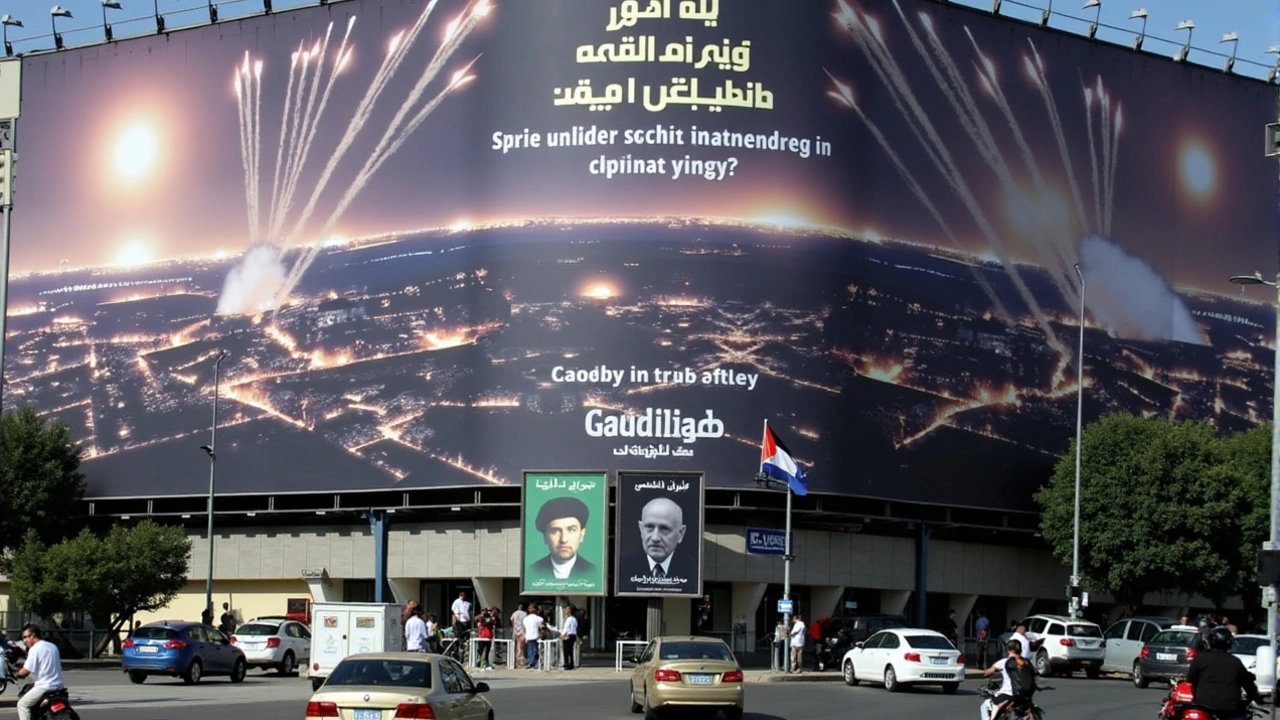
Escalating Middle East Tensions: Iran and Israel's Latest Confrontation
In the early hours of Saturday, October 26, 2024, the Middle East witnessed another flare-up between two of its primary antagonists, Iran and Israel. The region, already a tapestry of fraught geopolitical dynamics, saw fresh tensions as Israel launched airstrikes targeting several Iranian military bases. These strikes reportedly caused 'limited damage' according to Iranian officials, yet they underscore a lurking fear of a broader escalation in regional hostilities. Israel targeted strategic locations, including the provinces of Ilam, Khuzestan, and Tehran, pressing a calculated advance in the ongoing cycle of military engagements that characterize this long-standing conflict.
The latest military exchange comes amidst a landscape of anxious global watchers concerned about the potential ripple effects impacting wider regions far beyond the Middle East. Iran's defense systems actively tracked and responded to what they describe as Israeli 'aggression', revealing a stark tension between the two nations' military capabilities. While Iran has claimed damage was limited, the loss of two Iranian soldiers was an unfortunate outcome, marking a somber note amidst the broader military confrontation. The Iranian government's reported success in deflecting further damage might offer some solace, but the skirmish raises broader questions about the sustainability of such a volatile status quo.
Military Dynamics: Strategy and Responses
Strategically, these airstrikes illustrate Israel's continued resolve to preemptively counter what it perceives as threats to its security and regional stability. By targeting Iranian assets, particularly military infrastructure, Israel sends a decisive message of deterrence, hoping to stymie Iran's influence in areas perceived as vital to its defensive and offensive strategies. The choice of targets suggests a deep intelligence capability, aimed at crippling potential advancements in Iranian military projects, particularly those linked to its ballistic missile and drone programs, often flagged as concerns by Israeli defense officials.
In response, Iranian officials have emphasized their air defense systems' ability to detect and counteract these threats. The interaction between Israel's offensive maneuvers and Iran's defensive capabilities paints a picture of a region always on the edge, where military engagements are as much about deterrence as they are about showcasing military might. With an eye toward the international community, Iran's response has been both physical, in terms of defense, and rhetorical, through statements framing Israel as the aggressor. This dual approach aims to secure domestic support while galvanizing regional and potentially international allies.
Regional Implications and International Concerns
The implications of this escalation stretch far beyond the immediate borders of Iran and Israel. The tensions have reverberated across neighboring regions, creating a tremor felt most acutely in Hezbollah's Lebanon, where cross-border skirmishes with the IDF have heightened security alerts. Furthermore, the impact extends to volatile arenas like Iraq and Syria, where U.S. interests face threats from Iran-backed militias like the Houthi rebels. The reverberations of such escalations could potentially redraw the security calculations for many Middle Eastern countries and impact global geopolitical alignments.
For the international community, particularly the United States and European allies, the situation presents a tightrope walk of diplomatic efforts aimed at de-escalating tensions while maintaining strategic alliances. There is a growing consensus that unchecked aggression could tip the balance towards a wider conflict, with dire humanitarian consequences. Efforts to broker ceasefires or encourage dialogue are on the diplomatic agenda, seeking to halt further militarization of regional disputes. Such efforts are complicated by the complex web of alliances and enmities that have historically defined Middle Eastern geopolitics.
The Cycle of Violence: Historical Context and Future Prospects
Arguably, for both Iran and Israel, this is not a standalone incident but another chapter in a long history of mutual antagonism and strategic posturing. The roots of this conflict trace back decades, intertwined with broader issues involving territorial disputes, nuclear ambitions, and the ideological battle for influence in the region. This historical context is crucial to understanding the recurring tit-for-tat military actions that have long punctuated relations between these two nations.
The prospect of continued violence looms large, posing critical questions about the future of the Middle East's stability. Both nations, possessing substantial military capabilities and regional alliances, hold the power to influence peace or conflict. While peace efforts continue to emerge from various global sectors, achieving lasting security and cooperation remains an elusive goal. As global powers watch with vested interests, the actions of Iran and Israel in the coming months will likely dominate international headlines, having the potential to either stabilize or further fragment an already fragile Middle East landscape.